eco-tech Thermal Bed Bug and Pest Control Denver, Colorado
 How would you sum up a bed bug situation in a simple easy to understand terms?
How would you sum up a bed bug situation in a simple easy to understand terms?
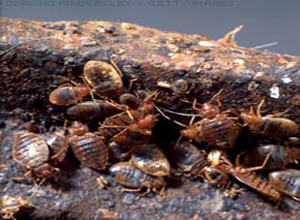 Female bed bugs may lay from 200 to 500 eggs, in batches of 10 to 50. The eggs are covered with a glue like substance and hatch in about 10 days. There are five progressively larger nymphal stages, each require a single blood meal before molting to the next stage. The entire life cycle from egg to adult requires anywhere from 5 weeks to 4 months, depending on temperature.
Female bed bugs may lay from 200 to 500 eggs, in batches of 10 to 50. The eggs are covered with a glue like substance and hatch in about 10 days. There are five progressively larger nymphal stages, each require a single blood meal before molting to the next stage. The entire life cycle from egg to adult requires anywhere from 5 weeks to 4 months, depending on temperature.
Bed bugs can go without feeding for 80 to 140 days. Bed bug nymphs are so small that they are almost impossible to see with that naked eye. Adults are about the size of small apple seed and have actually survived without food for as long as 550 days. A bed bug can take six times its weight in blood in a single feeding, and do so in just 3 to 10 minutes.
Adults live about 10 months and there can be up to 3 to 4 generations of bed bugs per year. Temperatures of about 123°F are lethal to most insects provided they cannot escape to a cooler location. Bed bugs are attracted to heat. However they will not walk towards the heat if they sense air flow. This is where eco-techs training, experience, and equipment come together to eliminate this problem and get your life back. We are able to exploit this vulnerability to heat by offering a complete thermal remediation normally in just one visit, using no chemicals.
 Where are Bed bugs found?
Where are Bed bugs found?
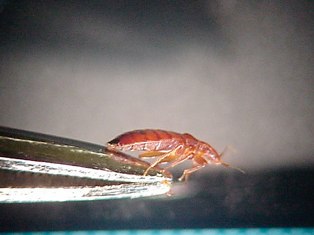 Bed bugs were common in the U.S. before World War II and became rare after widespread use of the pesticide DDT began in the 1940s and 1950s. They remained prevalent in other areas of the world and, in recent years, have been increasingly observed again in the U.S. Increases in immigration and travel from the developing world as well as restrictions on the use of stronger pesticides may be factors that have led to the relatively recent increase in bed bug infestations. While bed bugs are often reported to be found when sanitation conditions are poor or when birds or mammals (particularly bats) are nesting on or near a home, bed bugs can also live and thrive in clean environments. Crowded living quarters also facilitate the spread of bed bugs.
Bed bugs were common in the U.S. before World War II and became rare after widespread use of the pesticide DDT began in the 1940s and 1950s. They remained prevalent in other areas of the world and, in recent years, have been increasingly observed again in the U.S. Increases in immigration and travel from the developing world as well as restrictions on the use of stronger pesticides may be factors that have led to the relatively recent increase in bed bug infestations. While bed bugs are often reported to be found when sanitation conditions are poor or when birds or mammals (particularly bats) are nesting on or near a home, bed bugs can also live and thrive in clean environments. Crowded living quarters also facilitate the spread of bed bugs.
Bed bugs can live in any area of the home and can reside in tiny cracks in furniture as well as on textiles and upholstered furniture. They tend to be most common in areas where people sleep and generally concentrate in beds, including mattresses, box springs, and bed frames. They do not infest the sleeping surfaces of beds as commonly as cracks and crevices associated with the bed frame and mattress. Other sites where bed bugs often reside include curtains, edges of carpet, corners inside dressers and other furniture, cracks in wallpaper (particularly near the bed), and inside the spaces of wicker furniture.
Since bed bugs can live for months without feeding, they can also be found in vacant homes.
 What about bed bugs in hotels?
What about bed bugs in hotels?
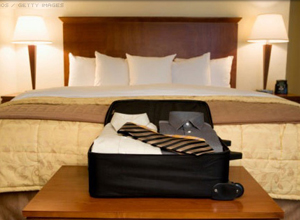 Many news reports in recent years have focused on the discovery of bed bugs in upscale hotels, and a number of lawsuits have been filed by guests in these fashionable hotels who awoke to find hundreds of bed bug bites covering their skin. Searching on TripAdvisor and other travel-review web sites regularly reveals information and even photos confirming the presence of bed bugs in numerous hotels.
Many news reports in recent years have focused on the discovery of bed bugs in upscale hotels, and a number of lawsuits have been filed by guests in these fashionable hotels who awoke to find hundreds of bed bug bites covering their skin. Searching on TripAdvisor and other travel-review web sites regularly reveals information and even photos confirming the presence of bed bugs in numerous hotels.
Since the bed bugs can arrive on the clothing or in the suitcases of guests from infested homes or other hotels harboring the pests, hotels can be an easy target for bed bug infestations.
 How are bed bugs spread?
How are bed bugs spread?
 Bed bugs live in any articles of furniture, clothing, or bedding, so they or their eggs may be present in used furniture or clothing. They spread by crawling and may contaminate multiple rooms in a home or even multiple dwellings in apartment buildings. They may also be present in boxes, suitcases, or other goods that are moved from residence to residence or from a hotel to home. Bed bugs can live on clothing from infested homes and may be spread by a person unknowingly wearing infested clothing.
Bed bugs live in any articles of furniture, clothing, or bedding, so they or their eggs may be present in used furniture or clothing. They spread by crawling and may contaminate multiple rooms in a home or even multiple dwellings in apartment buildings. They may also be present in boxes, suitcases, or other goods that are moved from residence to residence or from a hotel to home. Bed bugs can live on clothing from infested homes and may be spread by a person unknowingly wearing infested clothing.
 What are the symptoms and signs of bed bug bites?
What are the symptoms and signs of bed bug bites?
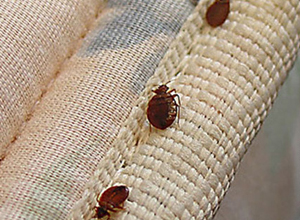 Bed bugs bite and suck blood from humans. Bed bugs are most active at night and bite any exposed areas of skin while an individual is sleeping. The face, neck, hands, and arms are common sites for bed bug bites. The bite itself is painless and is not noticed. Small, flat, or raised bumps on the skin are the most common sign; redness, swelling, and itching commonly occur. If scratched, the bite areas can become infected. A peculiarity of bed bug bites is the tendency to find several bites lined up in a row. Infectious disease specialists refer to this as the "breakfast, lunch, and dinner" sign signifying the sequential feeding that occurs from site to site.
Bed bugs bite and suck blood from humans. Bed bugs are most active at night and bite any exposed areas of skin while an individual is sleeping. The face, neck, hands, and arms are common sites for bed bug bites. The bite itself is painless and is not noticed. Small, flat, or raised bumps on the skin are the most common sign; redness, swelling, and itching commonly occur. If scratched, the bite areas can become infected. A peculiarity of bed bug bites is the tendency to find several bites lined up in a row. Infectious disease specialists refer to this as the "breakfast, lunch, and dinner" sign signifying the sequential feeding that occurs from site to site.
Bed bug bites may go unnoticed or be mistaken for flea or mosquito bites or other types of rash or skin conditions, since they are difficult to distinguish from other bites. Bed bugs also have glands whose secretions may leave odors, and they also may leave dark fecal spots on bedsheets and around their hiding places (in crevices or protected areas around the bed or anywhere in the room).
Bed bugs have not been conclusively proven to carry infectious microbes. However, researchers have implicated bed bugs as possible vectors of American trypanosomiasis (Chagas disease), and studies are ongoing to determine whether bed bugs may serve as disease carriers.
 Is there a non-chemical, non-toxic solution for bed bugs?
Is there a non-chemical, non-toxic solution for bed bugs?
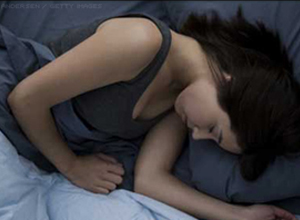 To battle insecticide-resistant bed bugs, Thermal Remediation® from TEMP-AIR is offering a line of electric bed bug heat treatment equipment, an effective solution designed specifically for the needs of pest control professionals, hotels, universities, and property management companies – from stand-alone portable electric packages to complete, integrated trailer systems.
To battle insecticide-resistant bed bugs, Thermal Remediation® from TEMP-AIR is offering a line of electric bed bug heat treatment equipment, an effective solution designed specifically for the needs of pest control professionals, hotels, universities, and property management companies – from stand-alone portable electric packages to complete, integrated trailer systems.
The Thermal Remediation® target temperature during treatment is between 120-135°F, the temperature necessary for heat to penetrate bed bug harborages. This safe, effective, and environmentally friendly process uses dry heat to kill the entire life cycle of bed bugs, while reducing the application of insecticides.
 How do I detect a bed bug infestation in my home?
How do I detect a bed bug infestation in my home?
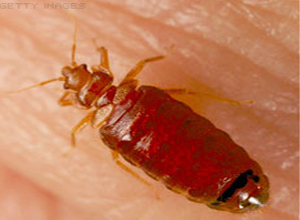 You can look to see if you can identify the fecal stains, egg cases, and exuviae (shed skins) in crevices and cracks on or near beds. You should also look at other areas such as under wallpaper, behind picture frames, in couches and other furniture, in bedsprings and under mattresses, and even in articles of clothing. While fecal stains and skin casts suggest that bed bugs have been present, these do not confirm that the infestation is still active. Observing the bed bugs themselves is definitive confirmation that an area is infested. You may require professional assistance from a pest-control company in determining whether your home contains bed bugs.
You can look to see if you can identify the fecal stains, egg cases, and exuviae (shed skins) in crevices and cracks on or near beds. You should also look at other areas such as under wallpaper, behind picture frames, in couches and other furniture, in bedsprings and under mattresses, and even in articles of clothing. While fecal stains and skin casts suggest that bed bugs have been present, these do not confirm that the infestation is still active. Observing the bed bugs themselves is definitive confirmation that an area is infested. You may require professional assistance from a pest-control company in determining whether your home contains bed bugs.
 What about prevention of bed bug bites?
What about prevention of bed bug bites?
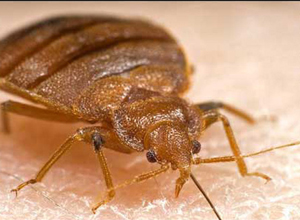 Avoidance of infested areas is the method for prevention of bed bug bites. Recognition of bed bug infestation and proper treatment of affected rooms (usually with the help of a pest-control specialist) is the best way to prevent bed bugs in the home. Those concerned about the potential for bed bugs bites in hotels should examine hotel beds and mattresses for signs of a bed bug infestation. Sealing your mattress in a bed bug prevention casing can be beneficial.
Avoidance of infested areas is the method for prevention of bed bug bites. Recognition of bed bug infestation and proper treatment of affected rooms (usually with the help of a pest-control specialist) is the best way to prevent bed bugs in the home. Those concerned about the potential for bed bugs bites in hotels should examine hotel beds and mattresses for signs of a bed bug infestation. Sealing your mattress in a bed bug prevention casing can be beneficial.
 What are They? What do they look like?
What are They? What do they look like?
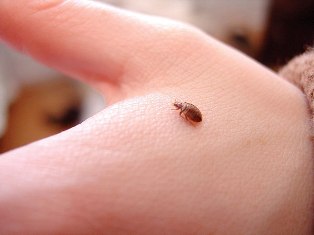 Bed bugs are small, oval, non-flying insects that belong to the insect family Cimicidae, which includes three species that bite people. Adult bed bugs reach 5-7 mm in length, while nymphs (juveniles) are as small as 1.5 mm. Bed bugs have flat bodies and may sometimes be mistaken for ticks or small cockroaches. Bed bugs feed by sucking blood from humans or animals. Adult bed bugs are reddish brown in color, appearing more reddish after feeding on a blood meal. Nymphs are clear in color and appear bright red after feeding. The wings of bed bugs are vestigial, so they cannot fly.
Bed bugs are small, oval, non-flying insects that belong to the insect family Cimicidae, which includes three species that bite people. Adult bed bugs reach 5-7 mm in length, while nymphs (juveniles) are as small as 1.5 mm. Bed bugs have flat bodies and may sometimes be mistaken for ticks or small cockroaches. Bed bugs feed by sucking blood from humans or animals. Adult bed bugs are reddish brown in color, appearing more reddish after feeding on a blood meal. Nymphs are clear in color and appear bright red after feeding. The wings of bed bugs are vestigial, so they cannot fly.

Our Employees are Crimshield Certified


Follow us on: